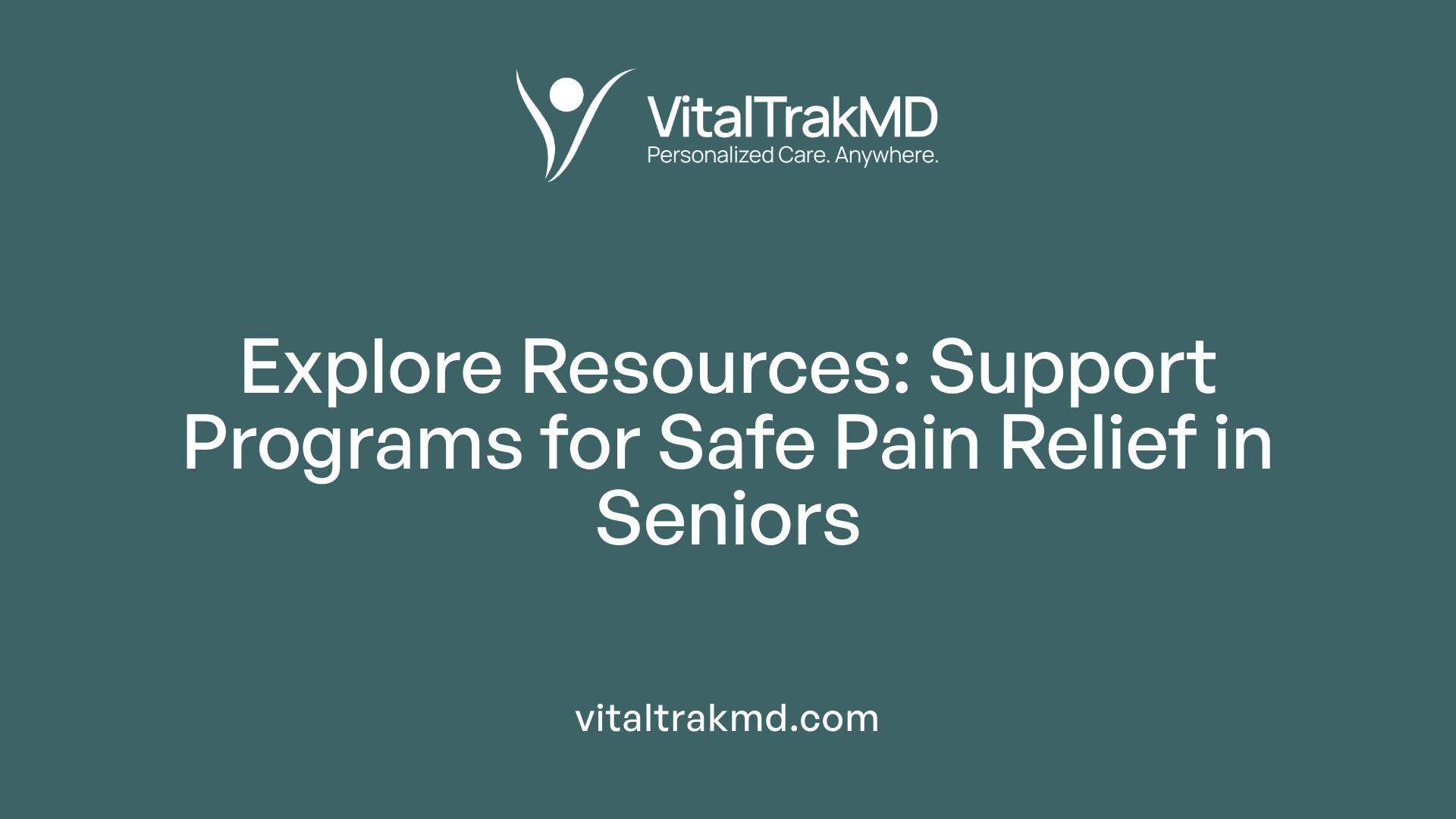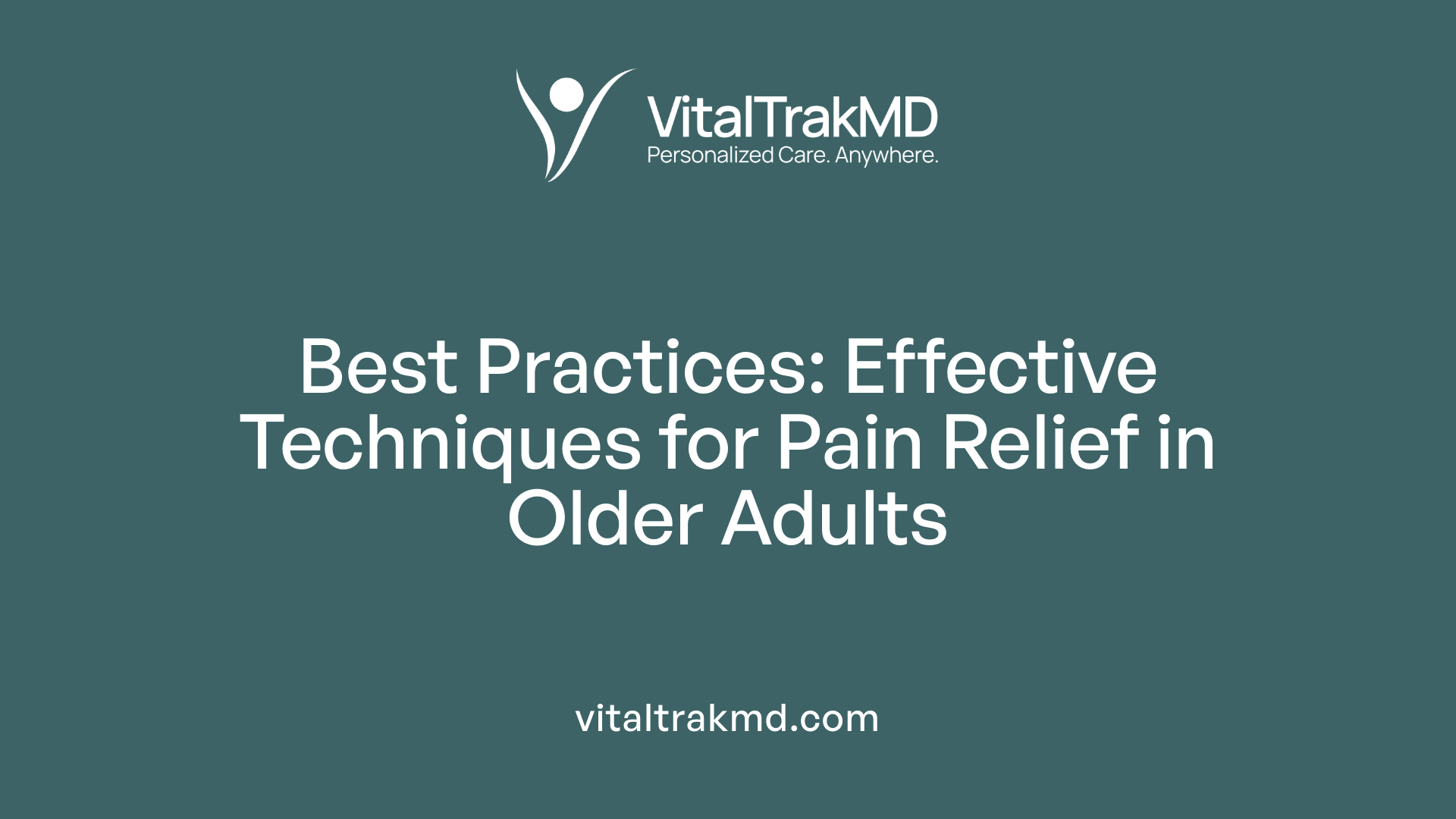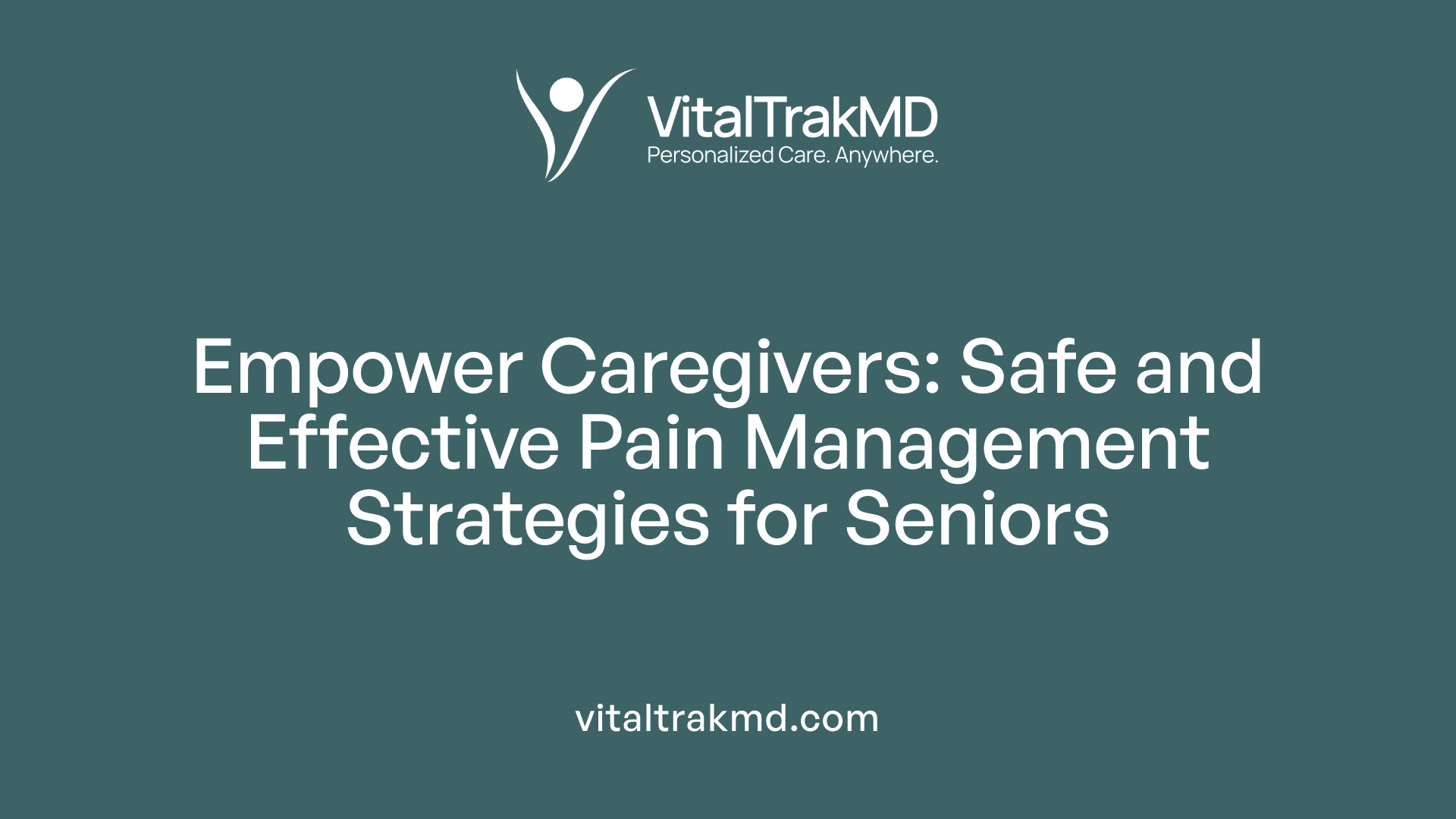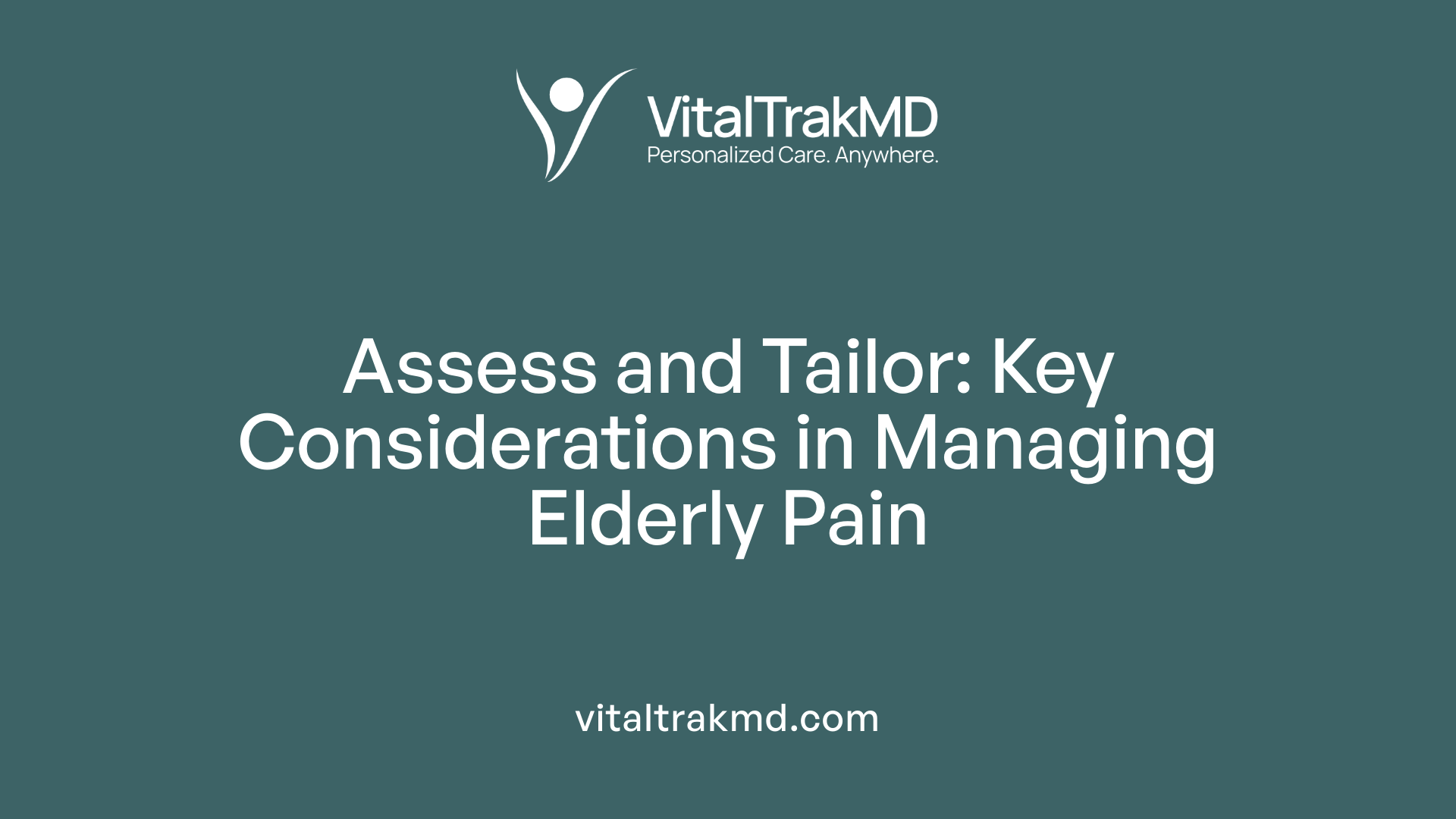Supporting Seniors With Guidance on Managing Pain Safely at Home

Understanding Pain in Seniors and How to Manage It Effectively at Home
Pain is a common and often complex condition affecting over 33% of seniors, significantly impacting their quality of life. Effective pain management requires a careful balance of medication, lifestyle modifications, and supportive interventions. This article explores comprehensive strategies, available resources, and best practices to help caregivers and older adults manage pain safely within the home environment.
Resources and Programs Supporting Safe Pain Management for Seniors
 A variety of programs and resources are available to help seniors manage pain safely and effectively. The National Council on Aging (NCOA) offers the Wellness and Pain Relief Program™, which provides a comprehensive, personalized approach to pain management. This program focuses on setting realistic health goals, educating seniors about medication safety, and connecting them with pharmacists for professional guidance.
A variety of programs and resources are available to help seniors manage pain safely and effectively. The National Council on Aging (NCOA) offers the Wellness and Pain Relief Program™, which provides a comprehensive, personalized approach to pain management. This program focuses on setting realistic health goals, educating seniors about medication safety, and connecting them with pharmacists for professional guidance.
The program is flexible in its delivery, offering in-person sessions, hybrid formats, and remote classes via platforms like Zoom. Materials and tools are distributed to both participants and facilitators, ensuring ongoing support. Participants learn about safe medication use, lifestyle adjustments, and relaxation techniques, which contribute to better pain control.
Community organizations also play a crucial role by offering participatory curricula and collaborating with local pharmacies and healthcare providers. These partnerships enable tailored interventions such as physical activity, stretching exercises, and anxiety-reducing practices.
Educational materials, online videos, and support groups are valuable additional resources. Organizations like the U.S. Pain Foundation provide extensive information on managing chronic pain, safe medication practices, and advocacy efforts, empowering seniors to take active roles in their treatment.
Healthcare professionals, including pharmacists, physiotherapists, nurses, and doctors, are essential partners in this process. They assess individual needs, recommend suitable medications and therapies, and monitor for adverse effects, thereby ensuring safety.
Utilizing these diverse resources in combination with personalized medical advice can significantly improve pain management outcomes for seniors, helping them retain independence and a better quality of life.
| Program/Resource | Description | Additional Support |
|---|---|---|
| NCOA Wellness and Pain Relief Program™ | Personalized education on medication safety, goal setting, pharmacist involvement | Available in multiple states, adaptable formats |
| Community-based curricula | Group activities focusing on lifestyle modifications, physical activity | Partnered with local pharmacies and providers |
| U.S. Pain Foundation | Educational videos, support groups, advocacy on pain management | Emphasizes empowerment and self-management |
| Healthcare professionals | Medical assessments, medication management, safety monitoring | Includes pharmacists, physiotherapists, nurses |
Effective Techniques and Best Practices in Managing Pain in Older Adults

What techniques and best practices can help older adults manage pain effectively?
Managing pain in seniors requires a multifaceted approach that combines various strategies tailored to individual needs. An effective practice involves implementing both pharmacologic and non-pharmacologic methods.
Firstly, medications should be selected carefully. Acetaminophen is often the first choice due to its safety profile. When appropriate, non-steroidal anti-inflammatory drugs (NSAIDs) and topical analgesics like capsaicin or lidocaine patches can be useful, but they must be used with caution because of potential side effects and interactions, especially in older adults with multiple health issues.
Non-drug strategies are equally important in comprehensive pain management. Physical therapies such as heat or cold packs, massage, hydrotherapy, and gentle exercises like walking or swimming help improve mobility and block pain signals. Psychological techniques, including cognitive-behavioral therapy, relaxation exercises, and mindfulness meditation, can reduce emotional distress and decrease the perception of pain.
Complementary therapies like acupuncture and Transcutaneous Electrical Nerve Stimulation (TENS) offer additional benefits for some individuals. These approaches aim to minimize medication reliance and limit adverse effects.
Education plays a crucial role. Programs that inform older adults about pain management techniques enhance their confidence and enable active participation in their care. Healthcare professionals like pharmacists, physiotherapists, psychologists, and nurses can support these efforts through personalized advice and training.
A multidisciplinary team ensures that care is holistic, covering physical, emotional, and behavioral aspects of pain. Updated assessment tools help track progress, refine treatment strategies, and adjust interventions as needed.
In summary, combining medication management with behavioral, physical, and educational interventions offers the most effective way to help seniors manage pain, improve quality of life, and maintain independence.
Caregiver Roles and Strategies for Pain Management at Home

What are effective approaches caregivers can use to manage chronic or acute pain in seniors?
Caregivers play a vital role in helping seniors manage both chronic and acute pain effectively within the home environment. They employ a mix of strategies that focus on medication safety, non-medication therapies, and vigilant monitoring.
Firstly, medication management is crucial. Caregivers must ensure that prescribed medicines are taken correctly, following healthcare provider instructions, and watch for potential side effects or interactions. Regularly monitoring pain levels and behavioral cues helps assess the effectiveness of treatment and alerts caregivers to any adverse issues.
In addition to medication, non-pharmacological methods are highly effective. Techniques such as relaxation exercises, slow, deep breathing, and mindfulness can ease tension and reduce pain perception. Applying heat or cold packs, engaging in gentle massage, or assisting with physical therapy exercises help stretch stiff muscles and improve circulation.
Integrating alternative therapies like acupuncture or TENS (Transcutaneous Electrical Nerve Stimulation) may also provide pain relief, often with minimal risk. Distraction activities, such as hobbies like knitting or reading, can help shift focus away from pain.
Maintaining open communication with healthcare professionals is essential. Caregivers should facilitate discussions with doctors or therapists to tailor care plans, adjust medications, and address any side effects or new symptoms.
Providing emotional support by encouraging social engagement and offering reassurance can also diminish feelings of frustration or depression caused by persistent pain.
In summary, combining safe medication practices, non-medication pain relief techniques, vigilant monitoring, and active communication with healthcare providers offers a comprehensive approach to managing senior pain effectively at home.
Precautions and Safety Measures in Pain Medication Use for Seniors
What precautions should be taken with medication use for pain management in seniors?
When prescribing medications to manage pain in older adults, healthcare providers need to exercise particular caution. Due to age-related changes, seniors often have decreased kidney and liver function, which can slow down the metabolism and elimination of drugs. This increases the risk of side effects and toxicity.
Starting with the lowest effective dose and titrating slowly helps prevent adverse effects. For mild to moderate pain, acetaminophen is generally considered the first choice because of its safety profile. Conversely, NSAIDs should be used cautiously and for limited durations, ideally through topical formulations, to minimize systemic risks such as gastrointestinal bleeding or kidney problems.
Clinicians must also be vigilant about drug interactions. Many seniors take multiple medications, increasing the chance of harmful interactions. Medications like certain antidepressants, benzodiazepines, and opioids need to be carefully managed due to their side effect profiles, including increased fall risk.
In addition to appropriate prescribing, non-drug strategies—including physical therapy, lifestyle modifications, and relaxation techniques—should be integrated into pain management plans. These approaches can enhance overall well-being and reduce reliance on medications, thereby reducing the potential for adverse effects.
Assessment and Treatment Considerations in Elderly Pain Management

What are the key considerations for assessing and treating pain in the elderly?
Managing pain effectively in older adults requires a nuanced and comprehensive approach, taking into account the unique physiological, cognitive, and social factors that influence pain perception and treatment response.
Assessment tools must be suitable for the individual's cognitive status. For those who can communicate, self-report scales like numeric rating scales or faces scales are useful. However, in cases of cognitive impairment or dementia, observational assessment methods such as the Abbey Pain Scale or PAINAD are essential to identify pain through facial expressions, body movements, and routines.
A thorough understanding of each patient's health profile is vital. This includes assessing for comorbidities, potential drug interactions, and the risk of side effects. The first-line pharmacological option is often acetaminophen, due to its safety profile when used appropriately. Non-pharmacological therapies, such as physical therapy, relaxation techniques, and psychological support, should be emphasized because they can help reduce reliance on medications.
Dosing must be carefully tailored, starting low and titrating gradually to minimize adverse effects. Regular re-evaluation ensures that treatment remains effective and safe, especially since aging can alter drug pharmacokinetics and increase sensitivity to certain medications.
Multidisciplinary teams are crucial in providing personalized care that aligns with individual needs and goals. This collaborative approach optimizes pain relief, maintains functional ability, and enhances overall quality of life.
In summary, effective pain management in seniors involves careful, ongoing assessments, balancing symptom relief with safety considerations, and employing a variety of therapies suited to the individual's circumstances.
The Importance of Multidisciplinary and Technology-Enhanced Pain Management

How do multidisciplinary teams and technology aid in pain management for seniors?
Managing chronic pain in older adults requires a comprehensive and personalized approach. Multidisciplinary teams bring together pain specialists, psychologists, physiotherapists, pharmacists, and caregivers to address all aspects of pain. This team-based effort ensures thorough assessments, considering not just physical symptoms but also emotional and social factors that influence pain.
Care teams develop tailored treatment plans that combine medication, physical therapies, and psychological support. For example, psychologists may provide cognitive-behavioral therapy (CBT) to help seniors cope with pain, while physiotherapists guide gentle exercises to improve mobility and reduce stiffness.
In addition, technology plays a vital role in modern pain management. Wearable devices can monitor physiological signs or activity levels, alerting healthcare providers to changes that might indicate worsening pain or side effects. Telemedicine enables remote consultations, especially beneficial for seniors with mobility challenges or those living in rural areas.
Virtual reality applications and apps for pain education are becoming more common, helping seniors understand and manage their pain better. These tools support ongoing self-management, improve adherence to treatment, and provide a sense of safety by maintaining continuous contact with health professionals.
Overall, combining a collaborative team approach with innovative technologies enhances the effectiveness of pain control strategies for seniors. It helps to improve their quality of life, maintaining independence and safety while managing complex pain conditions.
Supporting Seniors in Pain Management Through Education and Resources
Effective pain management for seniors living at home relies on a combination of professional guidance, accessible resources, caregiver involvement, and the integration of innovative therapies and technology. Recognizing individual needs and fostering open communication with healthcare providers ensures personalized care that maximizes safety and quality of life. Empowering seniors and their caregivers with education, support programs, and collaborative care approaches can lead to better pain outcomes and enhanced well-being, enabling seniors to maintain independence and comfort in their daily lives.
References
- 12 Effective Strategies for Managing Chronic Pain in Seniors
- Interventions to Support Family Caregivers in Pain ...
- 10 ways to reduce pain
- Safe and Effective Pain Management for Older Adults
- Pain Control in the Elderly & for Individuals with Dementia
- Pain Management | Texas Health and Human Services
- Safe Pain Management at Home | Generations Home Care
- Pain and pain management – adults
- Safe and Effective Pain Management for Older Adults
Recent articles
Want to Feel Better and Live Healthier?
Join hundreds of patients taking control of their health with personalized care that fits their life – not the other way around.
Rated 4.8/5 by 32+ customers







